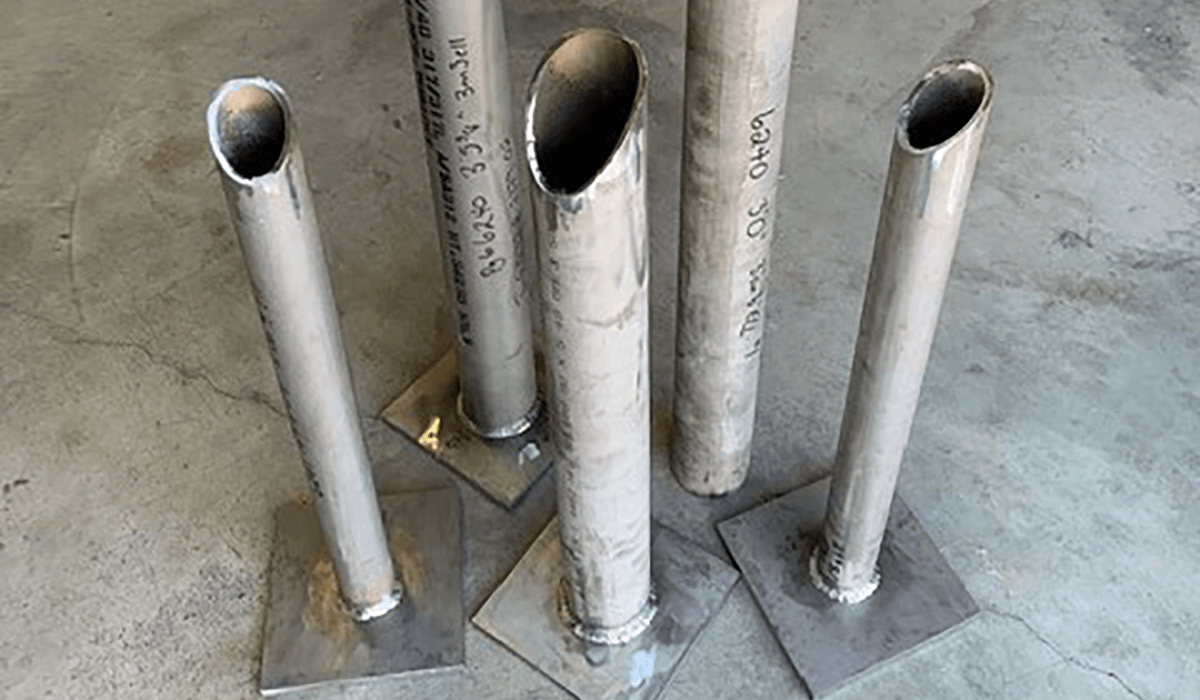
Trunnion pipe supports may not be the most flashy pipe supports out there, but they’re critical if you want to protect your piping system. In fact, without pipe trunnion support, high-performance piping systems could collapse—leaving you with delayed jobs and soaring expenses. We’re here to help you understand the role of trunnion support in piping and pin down the best ways to use this essential pipe support to strengthen your pipes.
What Is a Trunnion Support?
A trunnion pipe support is a pipe support that reinforces pipe sections and stabilizes piping systems. Pipe trunnions are used in instances where little or no movement occurs in the piping system.
The trunnion is an additional pipe, similar to the size of your parent pipe, that is welded to an active piping system in order to add physical support. Piping engineers use complex load-bearing calculations to figure out how much support they need within their piping system, and adding trunnions can be a key way to get that support.
How Do Pipe Trunnions Strengthen Your Piping System?
Beyond hoisting up pipes on a day-to-day basis, pipe trunnions can add extra protection in special circumstances. Here are some instances in which pipe trunnions go above and beyond to secure piping and increase your piping system’s performance:
Weak Spots
There may be runs or points within your piping system that don’t currently have the support they need to operate smoothly. You can usually determine where these underprepared areas are by conducting weight analysis and pipe stress analysis on your piping system. Unaddressed, these weak spots can cause piping to collapse, break, and fail. Both trunnions and dummy legs can reinforce these fragile sections and protect your entire system.
High Pressure Points
No matter how stable your pipes may appear to be, they have energy coursing through them. When liquids slam into pipe walls, it puts extra pressure on concentrated spots. For instance, when pipes turn suddenly at elbow joints, pressure is frequently applied to those focused areas and energy builds up. By adding trunnion support in these vulnerable spots, you spread out pressure and keep pipes from rupturing.
Awkward Piping Layouts
Sometimes your pipe runs will lack support or extend past supports. When elbows poke out beyond supports, they’re at risk of snapping. Pipe trunnions reinforce pipes at these awkward points and keep gravity from pulling pipes down.
How to Manage Load Levels with Pipe Trunnions
Your pipes are heavy, and they’re carrying thousands of pounds of rushing liquids. When you factor in gravity, thermal expansion, natural pipe movement, external elements, and other forces that smash down on pipes, it is safe to say your pipes need additional support. Pipe trunnions secure pipes, and the best trunnions will account for the full scope of loads as well as the conditions that exert extra pressure on your piping system.
Wondering how to spot the most reliable trunnion designs? There are three design factors that are essential if you want your pipe trunnions to support your piping system longer:
1. Heavy Load Conditions
Trunnion support designs must be able to handle loads under any condition. Also, the designs should account for elements, such as thermal expansion in the main line that can increase the load levels.
2. Proper Spacing
Designers and engineers must also guard against spacing that is too far apart. Long spans increase the stress levels between the trunnion and other support points. Because earthquake forces and other severe elements can cause damage, designers should also provide enough support to bear horizontal forces of around 10-30 percent of the vertical load or supported weight to accommodate for these incidents.
3. Extra Force
Trunnions also need to be prepared to take on extra forces. Piping systems need to withstand additional forces caused by hydraulic thrust or liquids that accelerate because of different valves and pressure-modifying components of the pipeline.
Key Factors in Measuring Load-Bearing Capability for Trunnions
Engineers and designers use complex calculations and metrics to determine the load-bearing capability of trunnion supports. However, there are some common factors that you can consider as you measure the load-bearing capabilities of your trunnions:
- Corrosion allowance: With higher corrosion likelihood, long-term load supporting capability decreases. Always consider what type of pipe materials you’re working with and identify any corrosion dangers, such as galvanic corrosion.
- Design temperature: As the temperature of your piping system decreases, piping strengthens and the load carrying ability will increase.
- Parent pipe thickness: Thicker pipe walls increase the stability of your piping system.
- Pipe material: Different pipe materials have varying strength capabilities.
- Pressure: When the system pressure within the piping decreases, the load bearing capability increases.
- Trunnion height: A decrease in trunnion height increases load bearing capability.
- Trunnion pipe diameter: The load-bearing capability of the trunnion pipe increases with size.
Given these factors, designers calculate the necessary strength of the piping systems using a trunnion worksheet with input data that includes:
- Materials
- Pad or base support thickness
- Pipe and trunnion diameters and thicknesses
- Distances
Find the Best Pipe Restraints to Enhance Your Piping System
Trunnions are essential pipe supports if you want to add stability to your piping systems. Still, there are more supports that are built to control pipe movement and increase the longevity of your pipes. Download our Complete Guide to Pipe Restraints now to learn what pipe supports can strengthen your piping system the most.






